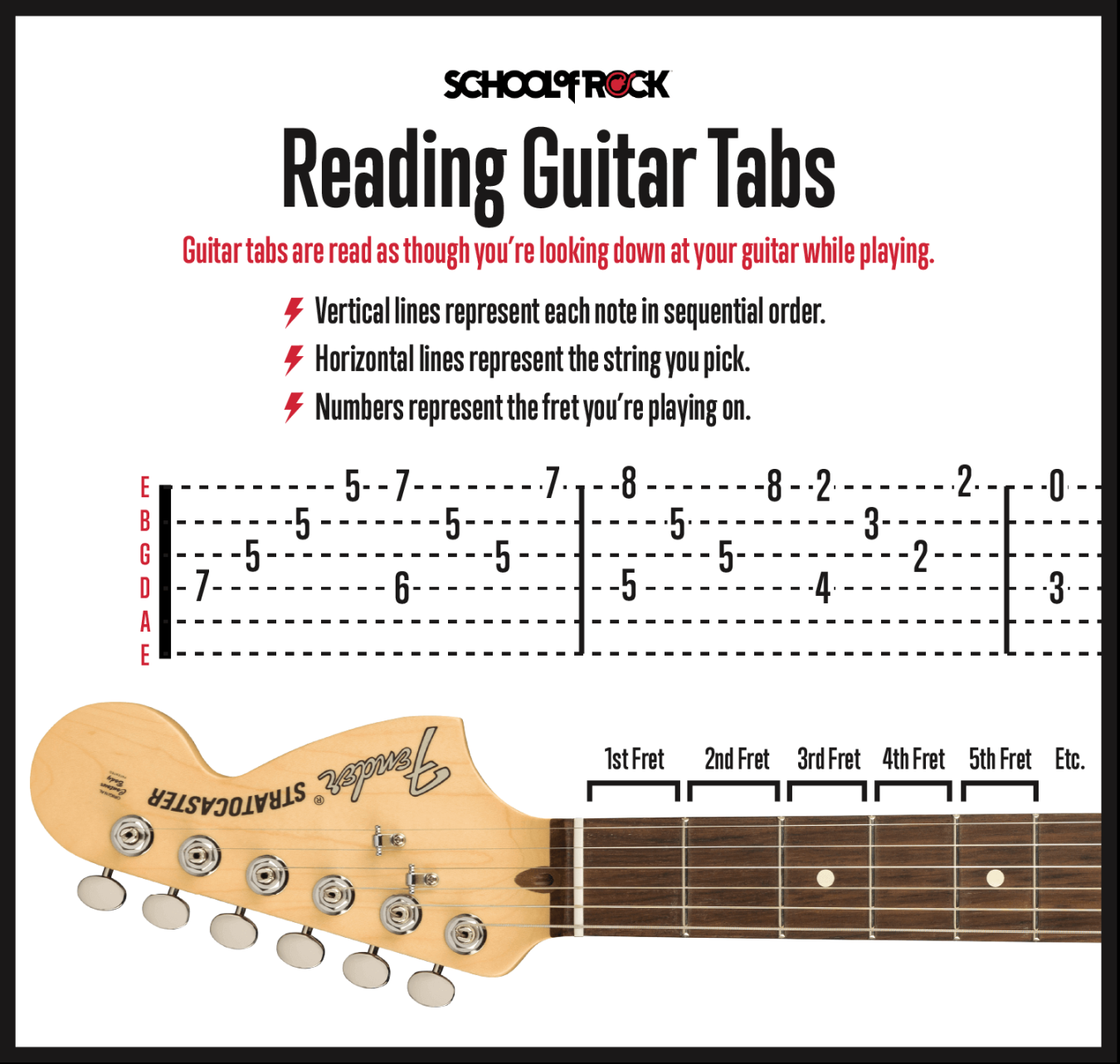How To Read Guitar Tabs: A Beginner’s Guide to Decoding Musical Lines
Learning to play the guitar opens up a world of musical possibilities. But before you can dive into your favorite songs, you’ll need to understand how to read guitar tablature, or “tabs.” Tabs are a simplified form of musical notation that visually represents where to place your fingers on the fretboard. This guide will take you through the basics, making it easy to decipher those lines and numbers.
Understanding the Basics: What Are Tabs?
Guitar tabs are a visual representation of the guitar’s fretboard. Unlike traditional sheet music, which uses standard musical notation to indicate pitch and rhythm, tabs focus solely on the physical act of playing the guitar. They show you which strings to play and which frets to press down.

The Six Lines: Representing Your Strings
The most fundamental aspect of tabs is the six horizontal lines. Each line corresponds to a string on your guitar. It’s important to remember the order of these lines:
Top Line: The High E String (thinnest string)
Second Line: B String
Third Line: G String
Fourth Line: D String
Fifth Line: A String
Bottom Line: The Low E String (thickest string)
Think of these lines as a simplified version of your guitar’s neck, laid out horizontally.
The Numbers: Your Fretboard Guide
Now, let’s talk about the numbers. These numbers are the key to knowing where to place your fingers. Each number represents a fret on the corresponding string.
A “0” means you play the open string, without pressing down any frets.
For example, if you see a “3” on the bottom line (the low E string), it means you should press down the third fret on that string and pluck it.
Reading Tabs from Left to Right: Following the Musical Flow
Just like reading a book, you read guitar tabs from left to right. This indicates the sequence of notes you need to play.
Notes appearing directly above each other mean you should play them simultaneously, creating a Chord or harmony.
Special Symbols: Beyond the Basics
While numbers are the core of tabs, you’ll often encounter special symbols that indicate various playing techniques. Here are a few common ones:
“h”: Hammer-on
“p”: Pull-off
“b”: Bend
“/”: Slide up
“”: Slide down
“x” or “Mute”: Muted string
“PM”: Palm muting
“Tapping” : T
Putting It All Together: Reading a Simple Tab Example
Let’s look at a simple example:
e|—0—3—2—0—|
B|—1—0—3—1—|
G|—0—0—2—0—|
D|—2—0—0—2—|
A|—3—2—0—3—|
E|—x—x—x—x—|
In this tab:
The first column indicates a chord.
By reading each column from top to bottom, you can see which frets to play on each string.
Practice Makes Perfect: The Key to Tab Mastery
Like any skill, reading tabs takes practice. Start with simple tabs and gradually work your way up to more complex ones. Many online resources and apps offer tab libraries and tutorials. Don’t be afraid to slow down the tempo and repeat sections until you’re comfortable.
Conclusion
Learning to read guitar tabs is an essential skill for any aspiring guitarist. While it might seem daunting at first, breaking it down into manageable parts makes it much easier to understand. By familiarizing yourself with the lines, numbers, and special symbols, you’ll be well on your way to decoding musical lines and playing your favorite songs. Remember to practice regularly, and don’t be afraid to experiment. With time and dedication, you’ll be reading tabs like a pro and unlocking a whole new level of musical enjoyment.

